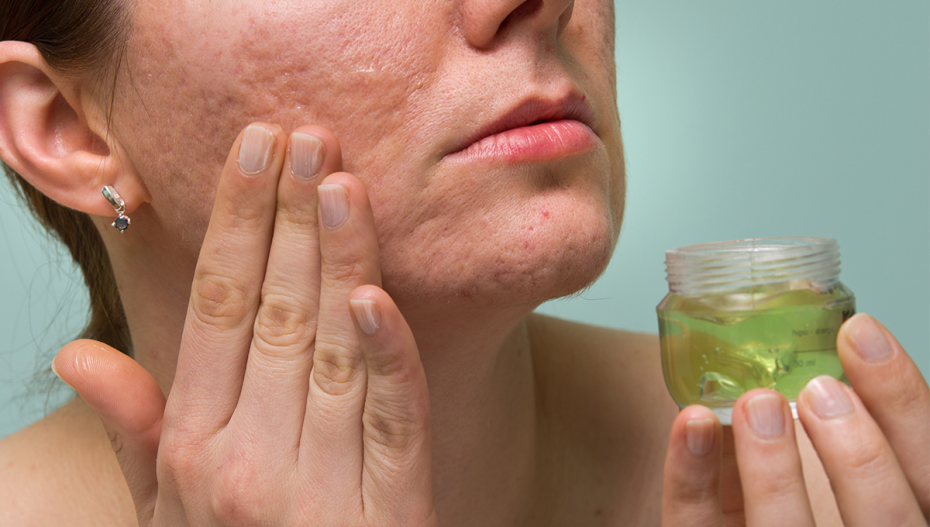Story covered by Jigar Saraswat
There are numerous treatment options available for getting rid of old and new scars. Consulting with a dermatologist can give you insights into the best option for your particular case.
The formation of scars is a normal aspect of the skin’s healing process, often arising from accidents, skin ailments, illnesses and surgical procedures. The good news is that scars don’t necessarily have to be permanent. There are various measures available to lessen the visibility of scars by using no scars cream, silicon sheets, chemical peels, and so on. So, if you have any old scar you want to get rid of, this article can help. Read on to learn about the different treatment options for reducing scars.
Medical Remedies for Reducing Scars
Here is a list of some of the most effective ways of getting rid of scars.
1. Topical Creams and Ointments
Depending on the nature of your scar, a doctor might recommend a prescription cream. These formulations frequently include potent retinoids or topical steroids to alleviate itching and swelling. Over-the-counter alternatives, such as No Scars cream, are also available. While these creams do not contain active prescription ingredients, they utilise alternative components aimed at diminishing scar size and visibility, as well as addressing redness or itchiness.
2. Silicone Sheets or Gels
Silicone gels and sheets can be applied to healing skin, but not on open wounds. Silicone has been used for many years in treating scars resulting from burns, surgery, and other skin injuries necessitating hospital care. The sheet form acts as a gentle wound cover, sealing the scar and maintaining hydration. For best results, the silicone sheet should be worn for over 12 hours daily for several weeks to months. A more recent advancement is topical silicone gel, which can be self-applied and dries rapidly into a thin sheet within 4-5 minutes. Research indicates that silicone gel reduces a scar’s texture, colour, and height.
3. Chemical Peels
They are effective for addressing mild scarring. The solution used in these peels dissolves the outer layer of the skin, promoting increased cell turnover and revealing a smoother, more even complexion. This treatment tends to be more beneficial for individuals with lighter skin tones. For those with darker skin, a glycolic acid peel might be more suitable. Azelaic acid is also a viable option for treating acne and pigmentation on the face.
4. Dermal Fillers
Injectable dermal fillers are gel-like substances administered beneath the skin. Typically, they are composed of hyaluronic acid, a naturally occurring substance in the body. These fillers can be employed to enhance pitted scars, such as those resulting from severe acne.
5. Subcision
It is a popular aesthetic procedure used to address acne scarring. It entails inserting a small needle into the skin to separate the acne scar from the underlying tissue. This method can be highly effective for depressed or indented scars, enabling the skin to elevate and reduce the visibility of the acne scar.
6. Laser Treatment
Various types of laser and light therapies can reduce the visibility of scars, including acne scars. Laser treatments utilise specific wavelengths of light to trigger specific reactions in the skin. Sometimes scars remain pink or red due to persistent new blood vessels that formed during the healing process. This laser treatment can cauterise these vessels from the inside out, removing them from the scar and allowing the pink or red colour to fade. This process may also help flatten thick scars or thicken thin ones. Other lasers, such as Fraxel laser, can vaporise small columns of tissues within the scar, breaking up collagen fibres and enabling the scar to remodel and become more flexible.
7. Punch Excision
It is a minor procedure commonly employed to eliminate acne scars. A dermatologist will surgically remove individual scars and then close the resulting wounds with stitches or skin grafts. In some cases, additional treatments like laser therapy may also be recommended. Treatment plans for acne scars differ based on individual skin type and the extent of scarring. Your dermatologist can discuss your options with you and recommend the most suitable course of action.
8. Steroids
Corticosteroid injections can effectively treat certain types of scars, such as thick or keloid scars. Administered directly into the scar tissue, these injections help alleviate redness, itching, and burning sensations associated with such scars. However, they are not suitable for other types of scars as they may cause a permanent indentation if injected into a flat scar. These injections work by reducing swelling and flattening the scar. Typically, multiple injections are given over several months. You can consult a doctor to see if this treatment option is suitable for you.
9. Scar-revision Surgery
Various surgical procedures can be undertaken to remove a scar, enhance its appearance, or perform a skin graft from another area. This involves replacing one type of scar with a different, more desirable scar.
10. Microneedling
It is suitable for various types of scars. This treatment involves using microneedles to puncture the skin, creating microchannels. This process stimulates collagen production, which aids in restructuring the skin and diminishing the visibility of scars.
If the appearance of a scar concerns you, then discuss with your healthcare provider the procedures available to make it less noticeable. There are several effective treatments that can flatten scars or reduce their visibility. Following treatment, you may find that the scar is hardly noticeable at all.













